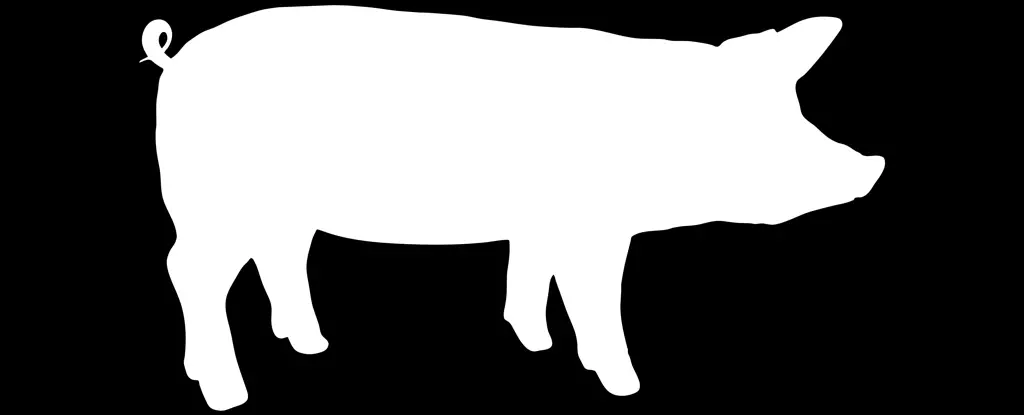The recent detection of the H5N1 bird flu virus in a pig on a backyard farm in Oregon has raised fresh alarms about the potential for this pathogen to impact public health beyond its established bounds. Traditionally confined to avian populations, the A/H5N1 strain has shown an unsettling capacity to infect a range of species, including poultry, wild birds, and now, farm pigs. This development underscores a crucial juncture in our understanding of zoonotic diseases—their capacity to jump from animals to humans and the ensuing ramifications for society at large.
The gravity of the situation is amplified by the emerging clade 2.3.4.4b of the H5N1 virus, which has now displayed a tendency to cross species barriers with increasing frequency. Reports indicate that livestock, particularly dairy cattle, have also fallen victim to this strain, with over 400 herds affected across at least 14 states in the U.S. This proliferation serves to highlight the urgent need for effective surveillance and rapid intervention strategies in the agricultural sector.
The consequences of bird flu extend far beyond the health of affected animals; they reverberate through the economic landscape of farming and food production. Infected poultry are typically culled to prevent further spread, a process that incurs significant financial losses for farmers. Similarly, the infection of dairy cattle raises questions about the safety of dairy products, although pasteurization processes generally mitigate these risks to consumers.
Particularly worrisome is the potential for the virus to evolve, increasing the threat of a human pandemic. The ability of viruses to mutate and adapt raises concerns—especially when considering the unique anatomical differences between birds and humans that facilitate the virus’s initial spread. Bird flu viruses are adept at infecting avians, but their ability to transmit among humans has historically been limited. However, the presence of the virus in pigs, animals that can harbor both avian and human strains of influenza, heightens the risk of dangerous mutations.
A pivotal concern regarding the H5N1 virus lies in its potential to mutate, effectively bridging the genetic gap between avian and human influenza strains. Research indicates that under certain circumstances, the virus can adapt its receptor affinity to better latch onto human cells, drastically altering its transmission dynamics. This capability for genetic mixing in pigs—often termed the “mixing vessel” phenomenon—makes them particularly perilous in the ongoing interplay between avian and human flu viruses.
Recent findings suggest that mutations in the H5N1 strain derived from human cases could facilitate greater human-to-human transmission. This concerning development calls for heightened vigilance as the virus becomes more widespread, particularly in regions with abundant avian populations. Surveillance measures must be escalated to detect unusual patterns of respiratory illness that could signal the emergence of a pandemic strain.
Early recognition of potential threats is essential to contain not only animal outbreaks but also to preempt human infection and transmission. Comprehensive surveillance systems to monitor bird and animal infections, along with protocols for swift reporting and response, will play a pivotal role. Economic support for farmers who report such incidents without delay is another vital component of an effective strategy.
Internationally, vigilance is critical; unusual spikes in outbreaks of pneumonia or severe respiratory issues should raise red flags, prompting immediate investigation into the causative agents. Systems like EPIWATCH can assist in such monitoring, allowing for quicker responses that could ultimately save lives.
Despite the current assessment from national health authorities like the CDC—which maintains that the risk posed to the general public remains low—the landscape is shifting. The H5N1 virus has demonstrated its adaptability, raising concerns that a future pandemic could emerge if such strains infect commercial livestock operations. Historically, rapid advancements in vaccine development processes have prepared public health systems for influenza outbreaks; nonetheless, innovative testing methodologies distinguishing between seasonal and pandemic strains must be implemented.
The evolving landscape of bird flu presents both immediate and long-term challenges for public health and agricultural practices. Although the current situation may appear manageable, the alarming infection of pigs—alongside the noted mutations in the virus—signals a need for precautionary measures. As the potential for a pandemic looms, it is essential that both government and health organizations prioritize comprehensive surveillance, rapid response protocols, and public education initiatives. By fostering proactive collaboration across sectors and strengthening our preparedness, we can work to mitigate the risks posed by the ever-evolving threat of avian influenza.


Leave a Reply